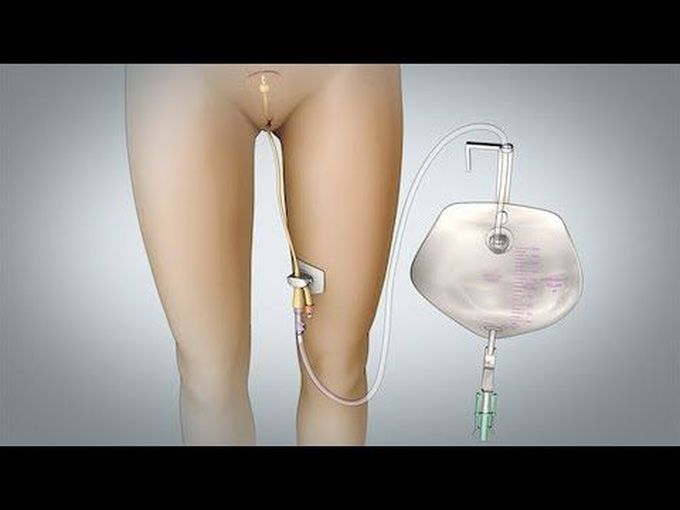


Removal of Foley Catheter (Female)
This video will teach you how to empty your Foley bag, and remove your Foley catheter. A Foley catheter is a thin rubber tube that runs from your bladder to a Foley bag that collects urine. A balloon filled with water holds the catheter in place. A syringe removes water from the balloon through the balloon port. Removing your Foley catheter involves emptying your Foley bag, deflating the balloon, and removing your catheter. You will need: disposable gloves; a syringe for removing the water from the balloon; and a clean cloth, or paper towels, to clean up spills. Be sure to keep the Foley bag lower than your hips to allow the urine to drain out of your bladder and into the bag. Step 1: Wash your hands with soap and water, and then dry them. Step 2: Hold the bottom of the Foley bag over a toilet. Step 3: Open the drain valve. Urine will begin draining from the bag. Empty the urine from the bag. Step 4: Close the valve. Now you will begin removing the catheter. Step 5: Wash your hands with soap and water again, and then dry them. Step 6: Put on disposable gloves. Step 7: Unclip the catheter from your leg. Step 8: Hold the balloon port tubing in one hand. Firmly push the end of the syringe into the balloon port and twist until you make a tight connection. Water from the balloon begins filling the syringe. Step 9: When the balloon is empty, relax take a deep breath, and gently pull on the calculator to remove it. Do not pull hard. If gentle pulling does not remove the catheter, contact your health care provider. After you remove the catheter, drink plenty of water to create the urge to urinate and ease burning when passing urine. Contact your surgeon if: you have any questions about your Foley catheter; your temperature is 101 degrees Fahrenheit or higher; your bladder feels full but you see no urine draining into the Foley bag; you cannot remove your catheter with gentle pulling; your urine is cloudy, has a foul odor; or you see a lot of blood in urine. it is normal to see a small amount of blood in your urine after removing a Foley catheter. Also contact your surgeon if: you cannot urinate within eight hours after removing the Foley catheter; you feel burning, or pain, when urinating that lasts longer than 24 hours; your stomach feels bloated or painful; you feel the need to urinate more often than normal; or your bladder doesn't feel empty after urinating.

